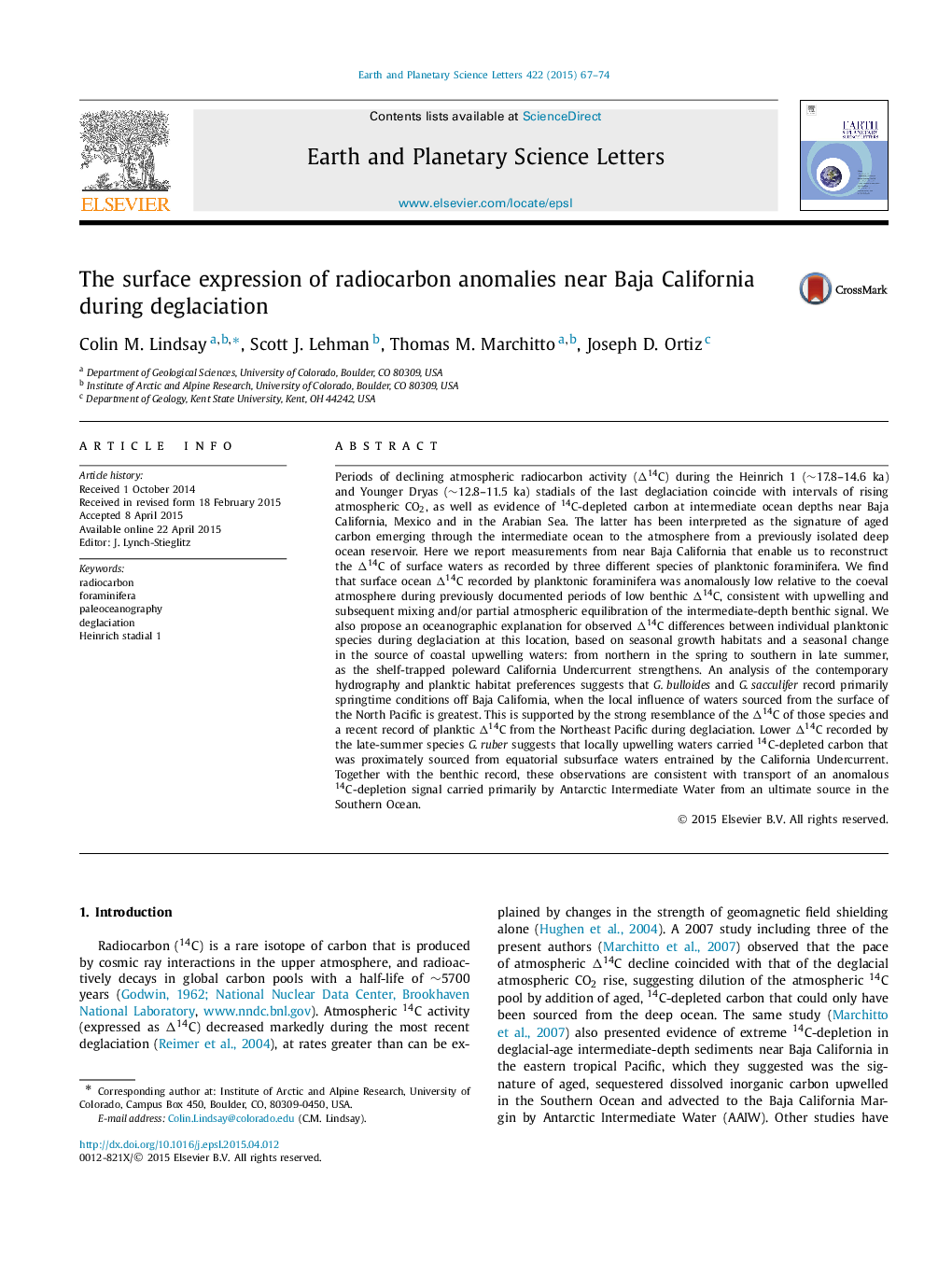| کد مقاله | کد نشریه | سال انتشار | مقاله انگلیسی | نسخه تمام متن |
|---|---|---|---|---|
| 6428328 | 1634734 | 2015 | 8 صفحه PDF | دانلود رایگان |
عنوان انگلیسی مقاله ISI
The surface expression of radiocarbon anomalies near Baja California during deglaciation
ترجمه فارسی عنوان
بیان سطح ناهنجاری های رادیو کربن در نزدیکی باکا کالیفرنیا در طی انهدام زلزله
دانلود مقاله + سفارش ترجمه
دانلود مقاله ISI انگلیسی
رایگان برای ایرانیان
کلمات کلیدی
موضوعات مرتبط
مهندسی و علوم پایه
علوم زمین و سیارات
علوم زمین و سیاره ای (عمومی)
چکیده انگلیسی
Periods of declining atmospheric radiocarbon activity (Î14C) during the Heinrich 1 (â¼17.8-14.6 ka) and Younger Dryas (â¼12.8-11.5 ka) stadials of the last deglaciation coincide with intervals of rising atmospheric CO2, as well as evidence of 14C-depleted carbon at intermediate ocean depths near Baja California, Mexico and in the Arabian Sea. The latter has been interpreted as the signature of aged carbon emerging through the intermediate ocean to the atmosphere from a previously isolated deep ocean reservoir. Here we report measurements from near Baja California that enable us to reconstruct the Î14C of surface waters as recorded by three different species of planktonic foraminifera. We find that surface ocean Î14C recorded by planktonic foraminifera was anomalously low relative to the coeval atmosphere during previously documented periods of low benthic Î14C, consistent with upwelling and subsequent mixing and/or partial atmospheric equilibration of the intermediate-depth benthic signal. We also propose an oceanographic explanation for observed Î14C differences between individual planktonic species during deglaciation at this location, based on seasonal growth habitats and a seasonal change in the source of coastal upwelling waters: from northern in the spring to southern in late summer, as the shelf-trapped poleward California Undercurrent strengthens. An analysis of the contemporary hydrography and planktic habitat preferences suggests that G. bulloides and G. sacculifer record primarily springtime conditions off Baja California, when the local influence of waters sourced from the surface of the North Pacific is greatest. This is supported by the strong resemblance of the Î14C of those species and a recent record of planktic Î14C from the Northeast Pacific during deglaciation. Lower Î14C recorded by the late-summer species G. ruber suggests that locally upwelling waters carried 14C-depleted carbon that was proximately sourced from equatorial subsurface waters entrained by the California Undercurrent. Together with the benthic record, these observations are consistent with transport of an anomalous 14C-depletion signal carried primarily by Antarctic Intermediate Water from an ultimate source in the Southern Ocean.
ناشر
Database: Elsevier - ScienceDirect (ساینس دایرکت)
Journal: Earth and Planetary Science Letters - Volume 422, 15 July 2015, Pages 67-74
Journal: Earth and Planetary Science Letters - Volume 422, 15 July 2015, Pages 67-74
نویسندگان
Colin M. Lindsay, Scott J. Lehman, Thomas M. Marchitto, Joseph D. Ortiz,
